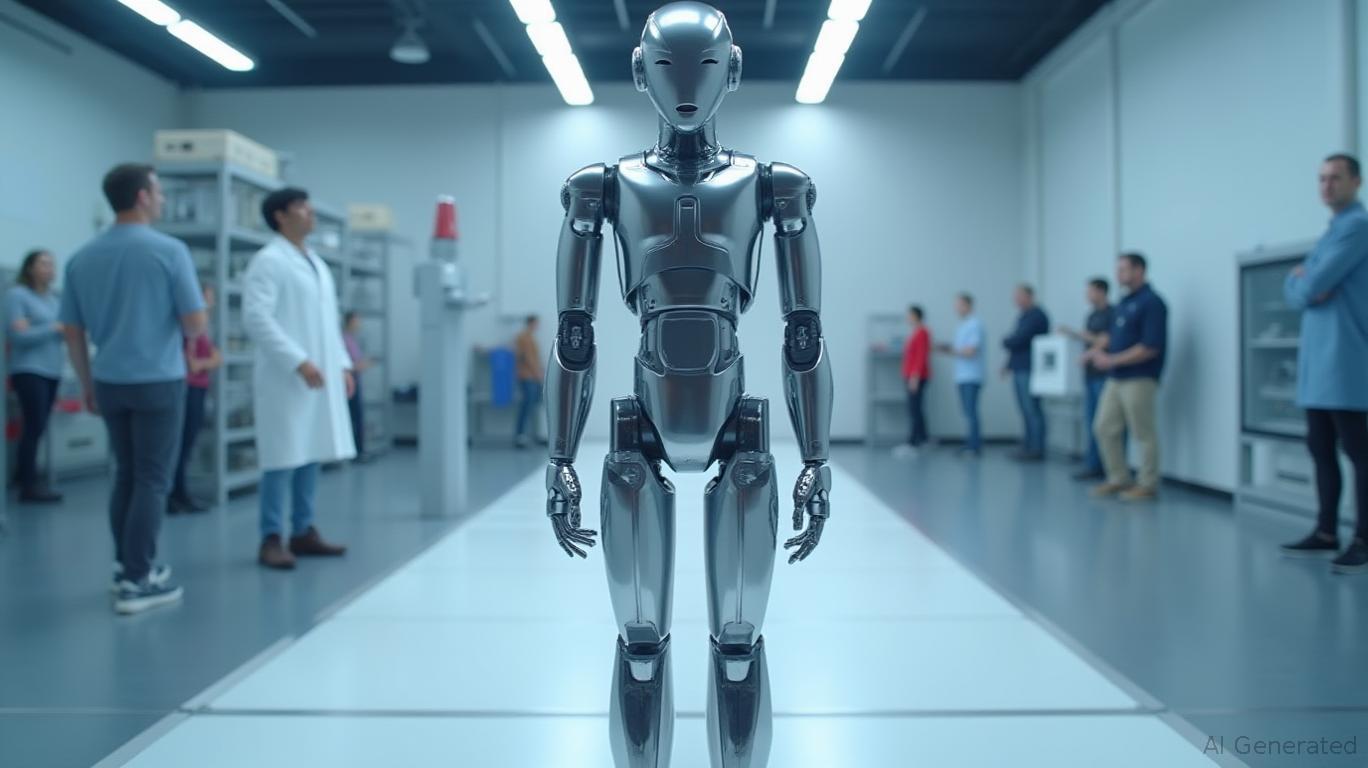Tesla's Leadership Evolution: Navigating Risk in Autonomy and Robotics
Tesla's recent organizational shifts—highlighted by Milan Kovac's promotion to Vice President of Optimus and Ashok Elluswamy's expanded role in AI and autonomous driving—signal a strategic pivot toward its AI and robotics future. However, these changes also expose critical leadership transition risks and execution challenges that could test the company's ability to justify its premium valuation. Investors must weigh near-term hurdles against long-term potential as
bets its future on autonomous vehicles and humanoid robots.
Leadership Shifts: A Strategic Reorganization or a Risky Gamble?
Contrary to rumors of his departure, Milan Kovac's promotion to lead Tesla's Optimus project underscores his critical role in advancing robotics—a domain integral to CEO Elon Musk's vision of “sustainable abundance.” Meanwhile, Ashok Elluswamy's expanded responsibilities, spanning Full Self-Driving (FSD), the Robotaxi network, and Artificial General Intelligence (AGI), position him as Tesla's de facto “AI CTO.” Together, their roles reflect a deliberate push to consolidate expertise in software and hardware integration.
Yet, this reorganization carries risks. Kovac's team faces immense pressure to commercialize Optimus, which remains in early-stage development. While recent demos showcased untethered dance movements, real-world applications—like factory work or home assistance—require solving “long-tail” edge cases in perception and control. Elluswamy's Robotaxi ambitions, set for a June 2025 Austin launch, must navigate safety concerns and regulatory hurdles. A misstep here could delay scaling to 1,000 robotaxis by 2026, a timeline already aggressive by industry standards.
Valuation Anchors: Can Tesla Deliver on Its AI Promises?
Tesla's valuation hinges on its ability to monetize autonomy and robotics. The company trades at ~40x forward revenue—far above peers like Ford (~1.2x) or Alphabet (~5x)—due to expectations of Robotaxi-generated recurring revenue and AGI breakthroughs. However, execution risks loom large:
- Technical Barriers:
- Robotaxis: Tesla's Vision-Only approach rejects LiDAR, a choice that may compromise safety in complex urban environments. Competitors like Waymo, which use multi-sensor fusion, have accumulated millions of miles in testing.
Optimus: Humanoid robotics requires solving power efficiency, dexterous manipulation, and natural language understanding—all areas where Tesla lags behind Boston Dynamics' Atlas or Unitree's Go1.
Regulatory Headwinds:
- U.S. regulators have yet to approve fully autonomous vehicles for public roads. Tesla's Robotaxi rollout in Austin could face delays if safety metrics fail to meet standards.
In Europe, Tesla's FSD rollout on highways—targeted for September 2025—must overcome bureaucratic inertia and liability concerns.
Leadership Dependency:
Tesla's reliance on Musk and a small circle of tech leaders (Kovac, Elluswamy) creates concentration risk. A departure or misstep by either could destabilize projects critical to the company's vision.
Near-Term Risks vs. Long-Term Potential
While risks are material, Tesla's advantages—massive data from its vehicle fleet, vertical integration, and Musk's vision—cannot be ignored. The Robotaxi network, if successful, could generate $20,000/year per vehicle in revenue, while Optimus's scalability could redefine labor markets. However, these outcomes depend on flawless execution of technical and regulatory milestones.
Investors must ask: Is Tesla's 2035 goal of “all new cars being self-driving” realistic? And can Optimus evolve from a demo to a commercially viable product by then? The answers will determine whether the company's premium valuation holds or crumbles.
Investment Implications
Tesla's stock has underperformed peers in 2025, down ~15% YTD amid concerns over Model 3 demand and Robotaxi delays. While the long-term narrative remains compelling, investors should:
- Reassess Valuation Anchors: Trim price targets if Robotaxi scalability or Optimus's technical progress falters.
- Monitor Execution Milestones: Track Robotaxi safety metrics, Optimus's move to real-world tasks (e.g., factory assembly), and FSD's European rollout.
- Consider Near-Term Risks: Supply chain bottlenecks, tariffs in India, and Musk's distraction with Starlink and Twitter could divert focus from core projects.
Final Take
Tesla's leadership evolution is a double-edged sword. While Kovac and Elluswamy's roles solidify the company's AI ambitions, execution risks loom large. Investors should remain cautious until tangible progress emerges. For now, Tesla's stock remains a bet on visionary leadership and distant milestones—a high-risk proposition for those not willing to hold through potential setbacks.
Recommendation: Hold Tesla stock only if you believe leadership can deliver on Robotaxi and Optimus timelines. Otherwise, wait for clearer execution signals or a pullback to ~$180/share—a 30% discount to current levels—to reassess.

Comments
No comments yet